Italian food, as we know, is one of the reasons why our country is so loved and has become a fundamental element of our country’s culture. From north to south, passing through the center and the islands, Italian cuisine tells the story and tradition of the different Italian regions, with typical dishes handed down from ancient times.

Thanks to typical recipes, it is possible to embark on a real journey to learn more about Italy, its language and the habits and customs of the inhabitants of that region.
What distinguishes Italian food from the rest of the world is the uniqueness of the ingredients used to prepare the dishes and the link with a territory that holds within it products that are unique in the world.
Exploring the cuisine of a country is therefore an effective way to immerse yourself in its culture. If you are a cooking enthusiast, you will find interesting information in this article that will also allow you to learn Italian while having fun and reading something satisfying for your palate.
Come with us on this journey through Italy to discover the typical food of our country!
Typical Italian food from Northern Italy
In the north, it is colder and the cuisine is also influenced by the climate and the conformation of the territory.
The typical dishes of the northern regions, such as Piedmont and Lombardy, are influenced by the presence of the mountains, the Alps, and are famous for their meat, cheese and mushroom-based dishes.
Piedmont, in particular, is known for its refined and flavorful food. Here you can taste dishes such as braised beef in Barolo, agnolotto del plin, the famous white truffle of Alba and cheeses such as toma piemontese.
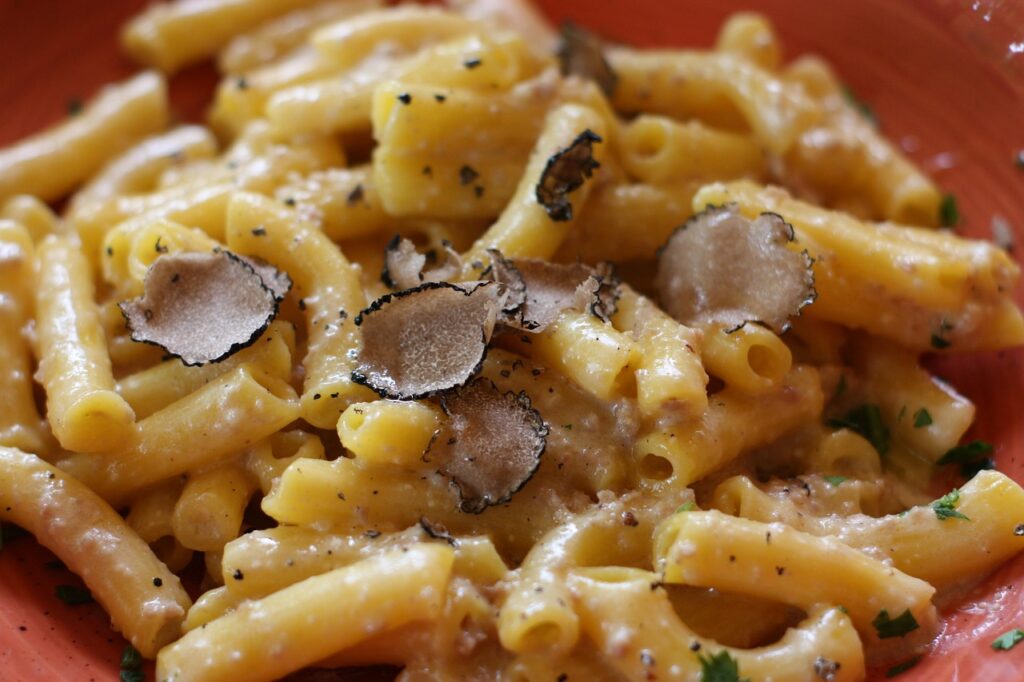
The traditional cuisine of Lombardy is famous for its variety and richness of flavors and is known for typical products that represent the excellence of the territory. The region boasts a rich dairy tradition: among the most famous cheeses are Gorgonzola, Grana Padano, Taleggio and Robiola, each with different and unique characteristics. It is impossible to forget the cotoletta or risotto alla milanese, which you can taste in all the typical restaurants of the city of Milan.

The cuisine of the Aosta Valley is a fascinating mix of Italian, French and Swiss influences, which is reflected in a wide range of typical dishes and products. The dishes are based on local ingredients, such as cheeses, cured meats, mushrooms, potatoes, rye bread and game meat. One of the most famous dishes is polenta concia, a polenta prepared with the famous cheese called fontina, and often accompanied by porcini mushrooms or sausage, but also carbonada, a beef stew cooked with wine, spices and seasonal vegetables.
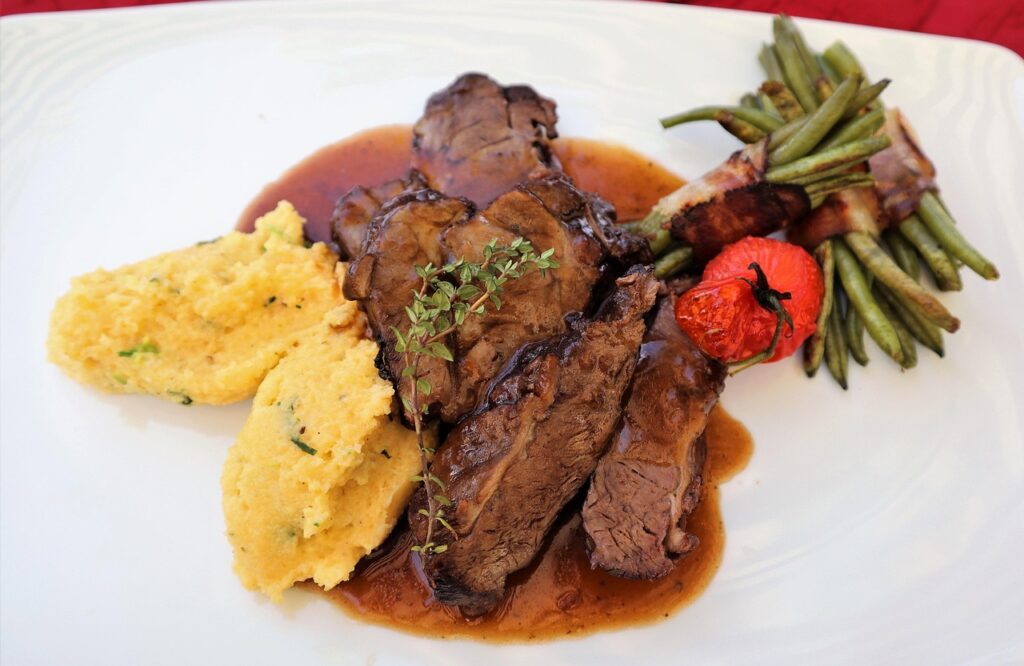
Traditional Ligurian cuisine is simple and also tied to local ingredients: the aromas of Mediterranean herbs, such as basil and rosemary, blend with the flavors of the sea and local vegetables, giving life to tasty and aromatic dishes. Trofie al pesto is one of the most famous dishes, with handmade pasta topped with pesto made from basil, pine nuts, garlic, parmesan, pecorino and extra virgin olive oil. We cannot forget about focaccia, in Genoese dialect “fugassa”, more than a recipe it is a concept, a philosophy of life, a true identity card for the inhabitants of this region.
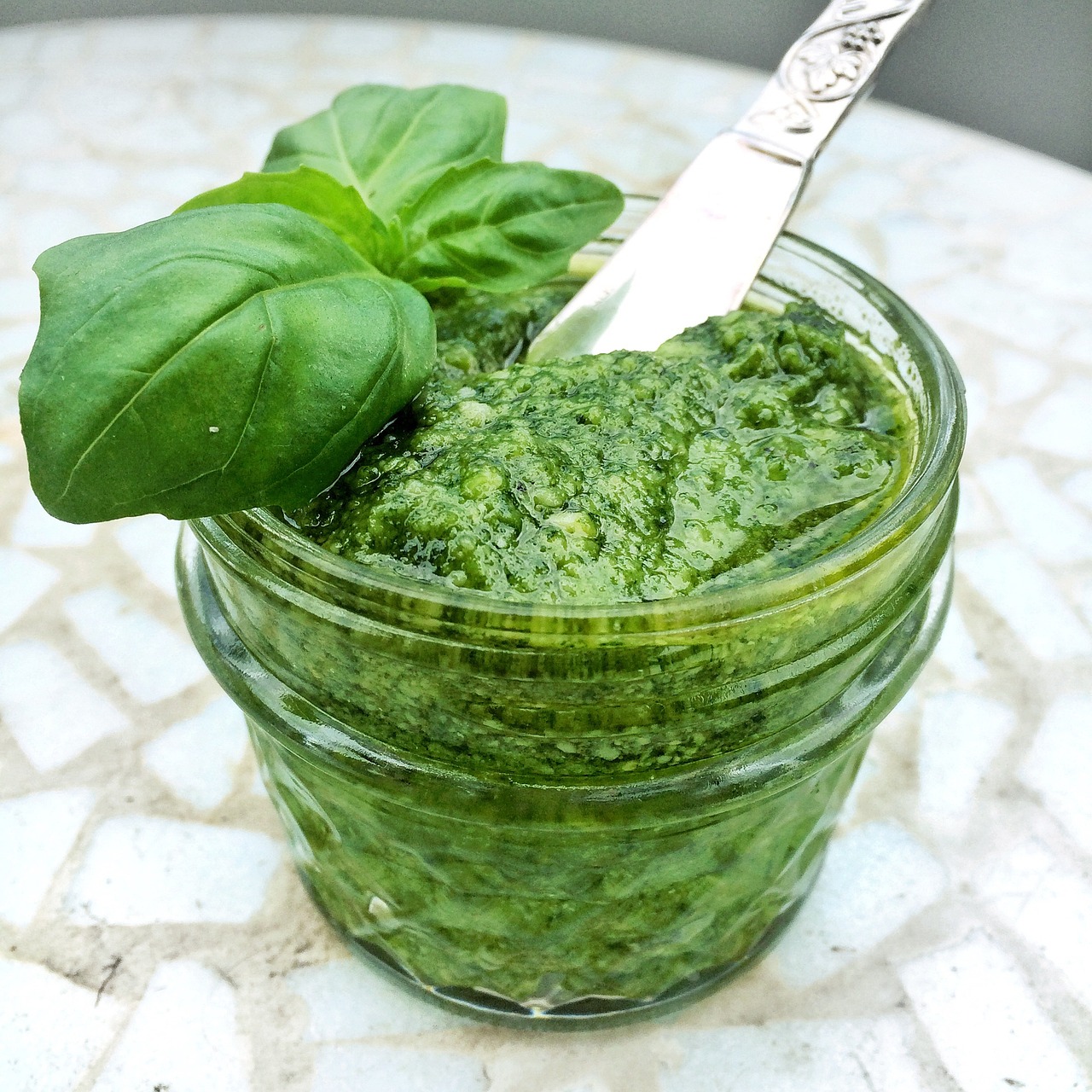
The food of Trentino Alto Adige combines the traditions of Italian cuisine with those of Hungarian, Tyrolean, Slavic and German cuisine. The most famous specialties and typical products are carne salada, speck and wurstel. Also important is the production of mountain milk, from which butter, cream and yogurt are obtained.
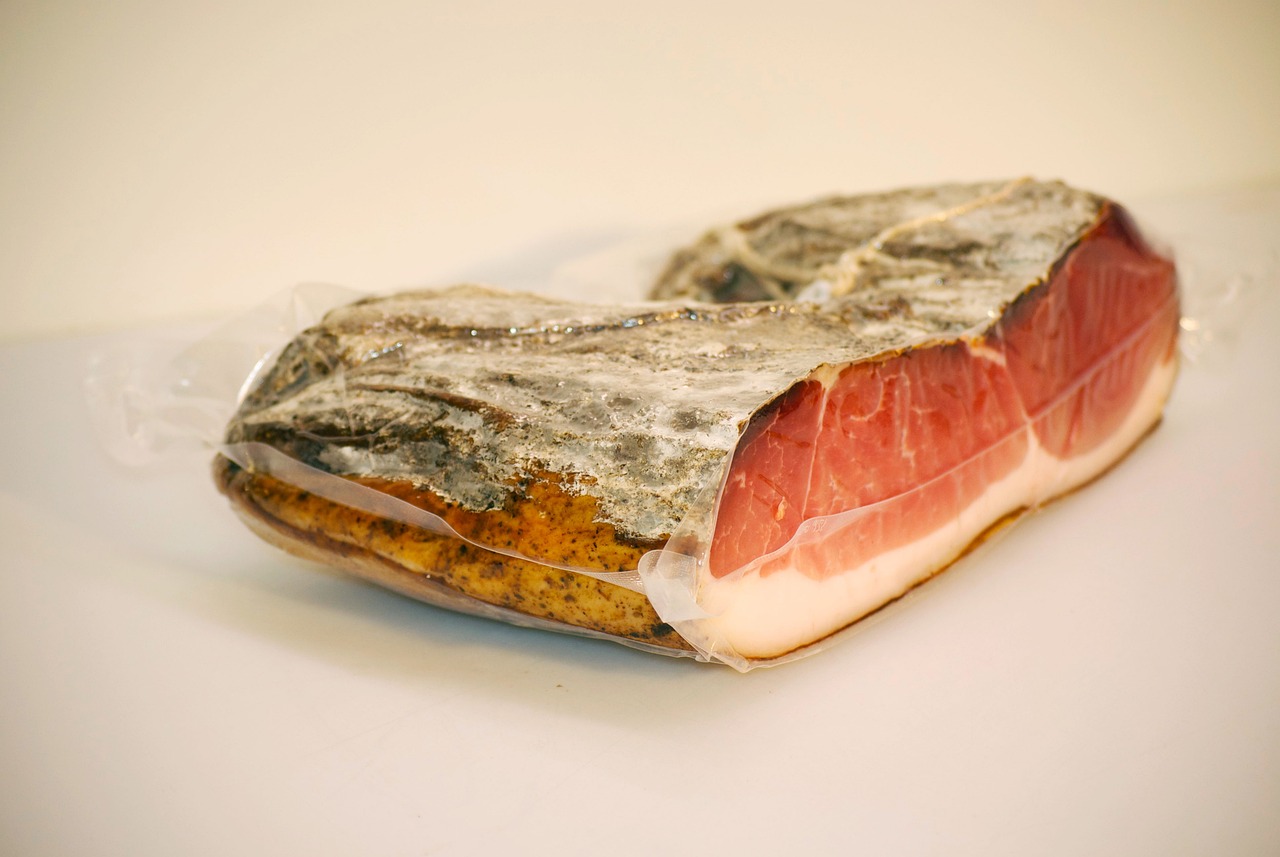
Veneto is characterized by a great variety of flavors. Its geographical position, which includes the Adriatic coast, the Po plains and the hills and mountains of the Prealps and the Dolomites, allows for a wide choice of country and seafood products. Particularly famous are the baccalà alla vicentina and the baccalà mantecato alla veneziana, a typical appetizer, often served with bread or polenta crostini. A curiosity about the history of baccalà: the name has its roots in the maritime tradition and the need to preserve the fish for long periods without it deteriorating. The term “baccalà” derives from the Low German word bakel-jau, meaning “hard as a rope”, due to the elongated shape and consistency of the dried fish. Among the desserts, we cannot forget one of the most famous Christmas desserts in the world, the Pandoro, born in the city of Verona.
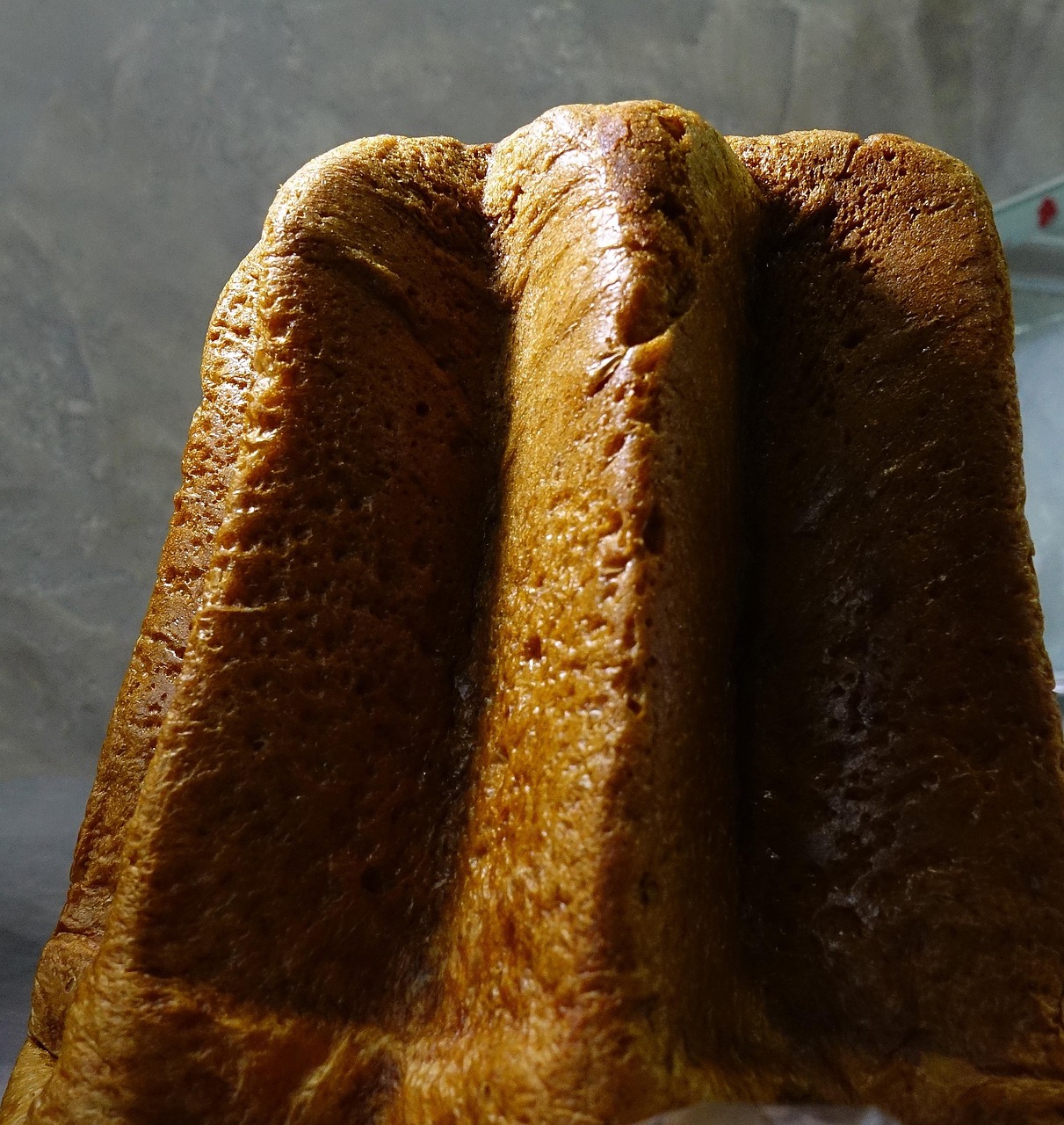
The food of Friuli Venezia Giulia is also famous for its variety and richness of flavours and offers authentic and tasty cuisine, characterised by typical products such as Montasio, a hard cheese with a slightly spicy note, and San Daniele and Sauris ham.
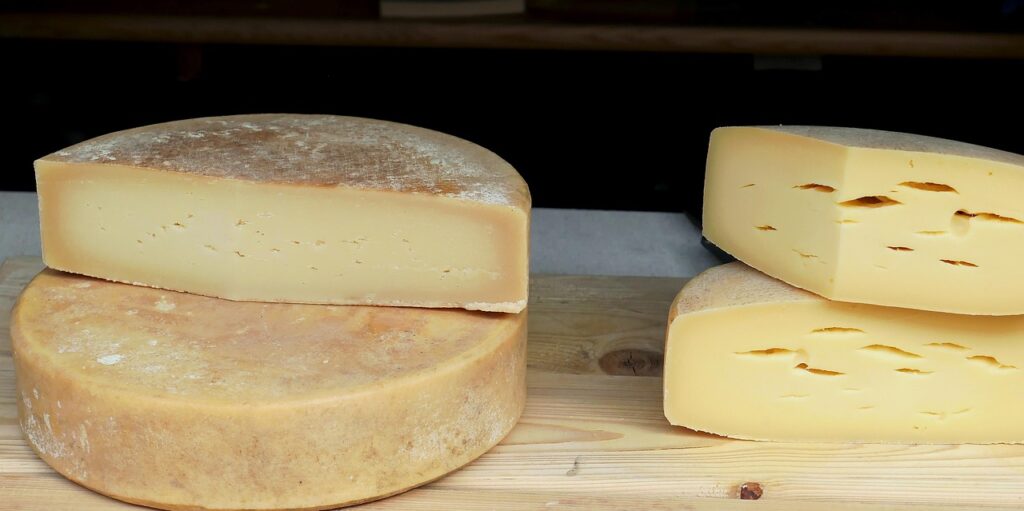
The history of the typical food of Emilia-Romagna is instead closely linked to its privileged geographical position and the variety of ingredients and products available, which has contributed to creating a unique and very diverse cuisine, even from city to city. Emilia-Romagna is famous for its cured meats, such as Parma ham, Culatello di Zibello and Mortadella di Bologna, which are an integral part of the local gastronomic culture, but also for its cheeses. The most famous is Parmigiano Reggiano, prepared following traditional methods passed down from generation to generation.
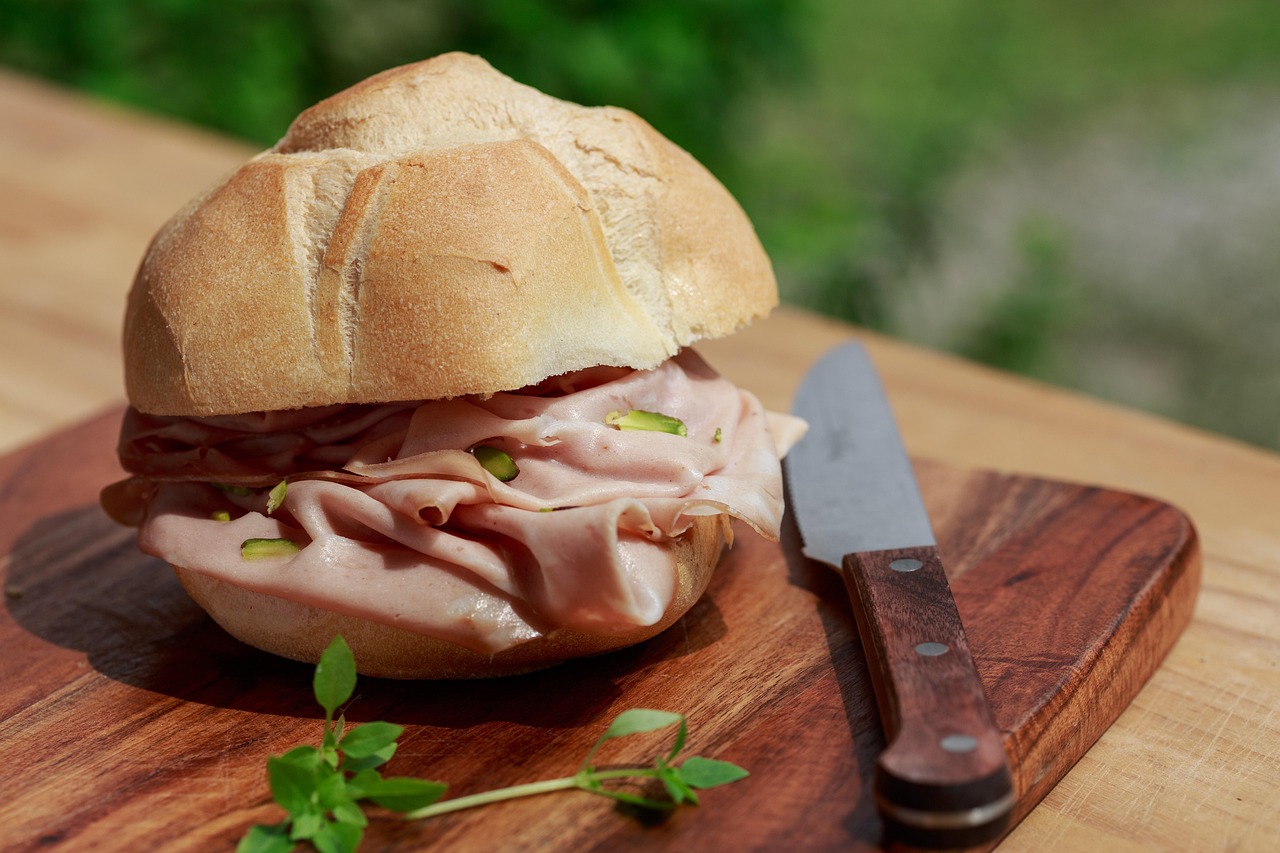
Another important element of Emilia-Romagna cuisine is homemade pasta. The region is known for a wide range of handmade pastas, such as tortellini, tagliatelle, and passatelli, often topped with delicious sauces, such as the world-famous ragù alla bolognese.
Typical Italian food from central Italy
The central regions, such as Tuscany, have a rustic but at the same time very rich food, based on ingredients such as olive oil, legumes, cereals and beef, such as the famous Fiorentina, but also cured meats and cheeses. Tuscan pecorino cheeses are very versatile in the kitchen. They can be enjoyed alone, accompanied by honey or jams, or used as an ingredient to enrich numerous traditional dishes. They are often used to give more flavor to first courses, such as pappardelle with wild boar ragù, to enrich salads or to prepare tasty appetizers.

The cuisine of Lazio includes richer and more demanding dishes, with a large use of pork even in first courses: here you can taste pasta alla carbonara and all’amatriciana, coda alla vaccinara, the famous gnocchi alla romana and tonnarelli cacio e pepe.
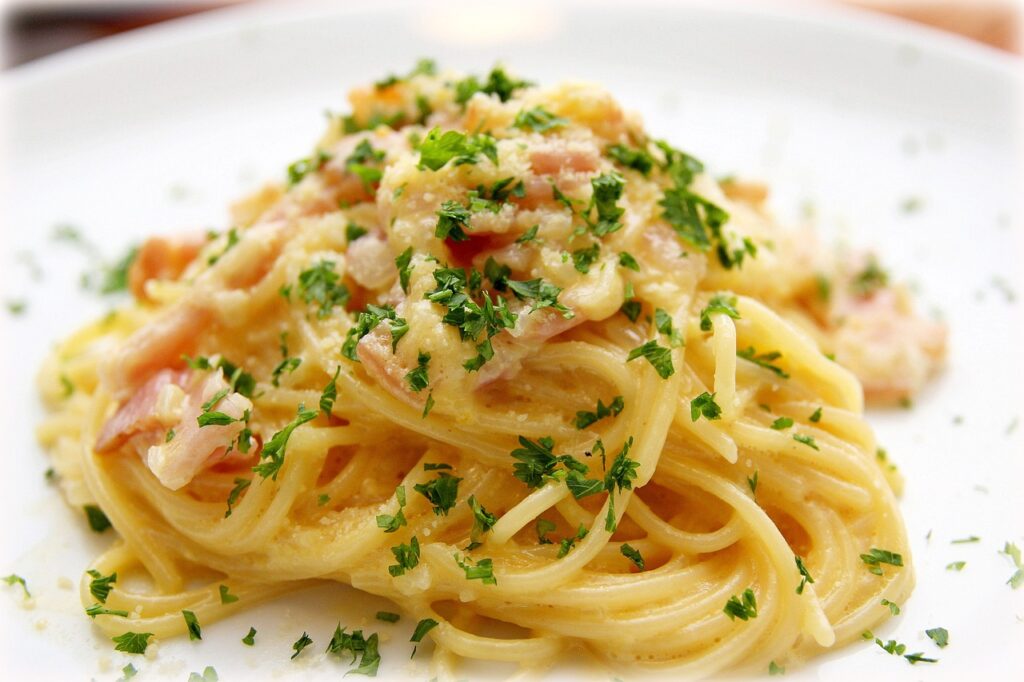
In Umbria, on the other hand, simpler recipes and products such as olive oil, cured meats, lentils and truffles prevail. The region, and in particular the city of Norcia, is the cradle of norcineria, that is, the art of working and preserving pork, a tradition that has consolidated over the centuries and that continues today in central Italy thanks to the norcini, artisans who work with meat following traditional recipes and methods. Particularly appreciated is the Norcia ham, but also guanciale, capocollo, lonze and sausages.

Located in central Italy, between the Adriatic and the Apennines, the Marche region offers a variety of dishes and fine products, linked to both the sea and the hilly areas. It is renowned for its cured meats, such as the delicate and sweet Carpegna ham and the Ciauscolo, a spreadable salami flavored with garlic and wine, but also for the Fossa di Sogliano cheese and Ascoli olives.
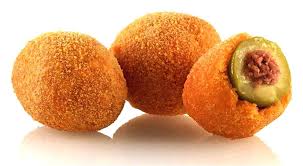
Abruzzo cuisine also has a unique variety of ingredients: the region is famous for its cured meats, including ventricina, Abruzzese salami, and Nnuje, a mix between salami and sausage made with tripe and pork belly.
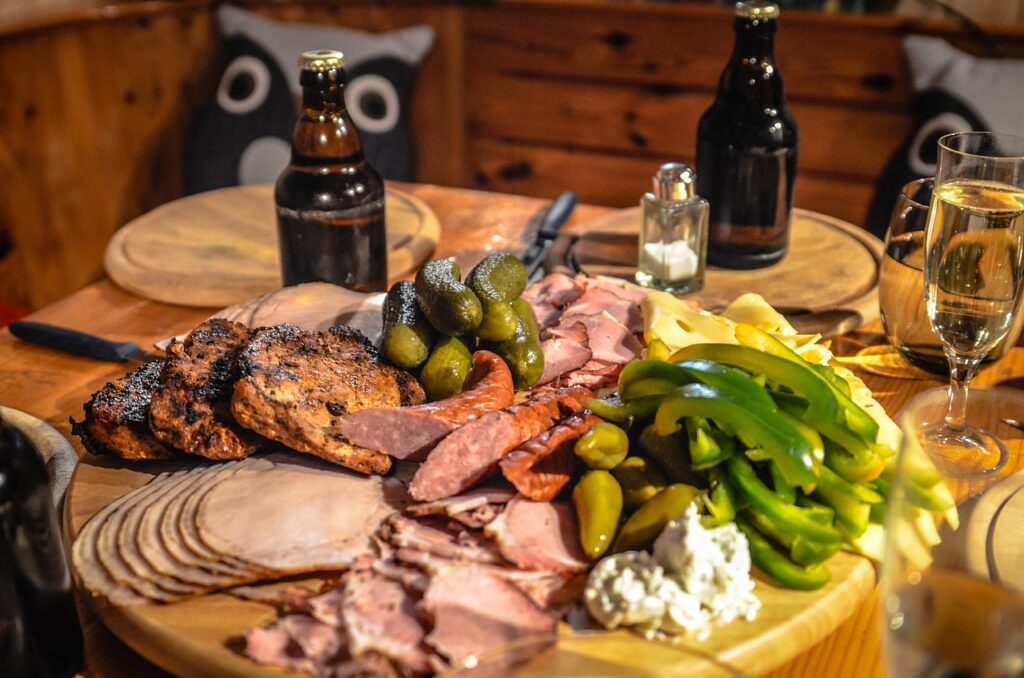
Traditional cheeses from Abruzzo include several varieties of pecorino, ricotta, and scamorza. Homemade pasta is another icon of the local cuisine: popular types of pasta include maccheroni alla chitarra and gnocchetti abruzzesi. In addition to pasta, Abruzzo is known for producing high-quality rice, which is used to prepare dishes such as riso e fagioli and minestra di riso abruzzese.
Various fresh pasta specialties are also prepared in Molise. Among the most famous is pasta alla molisana, which is usually served with meat-based sauces, fresh tomato, pecorino cheese, and local herbs. Other traditional pasta types include spaghetti alla chitarra, handmade tagliolini that take their name from the unique guitar-shaped grater used to make them, and cauciuni, a type of ravioli filled with ricotta and chocolate.

Typical Italian food from Southern Italy and the islands
The southern regions are characterized by typical Mediterranean cuisine, rich in fish, seafood, tomatoes and olives.
The food of Campania is characterized by the use of a great variety of fresh and local ingredients, such as tomatoes, mozzarella and fish. Let’s remember that the famous pizza was born in Naples! The use of aromatic herbs and spices, such as basil and chili pepper, gives Campania dishes a unique and unforgettable flavor. The region is also famous for its cheeses. Among the most famous and appreciated cheeses of Campania are certainly buffalo mozzarella and provolone, a cheese with a strong flavor, slightly spicy and with a typical pear shape.The southern regions are characterized by typical Mediterranean cuisine, rich in fish, seafood, tomatoes and olives.
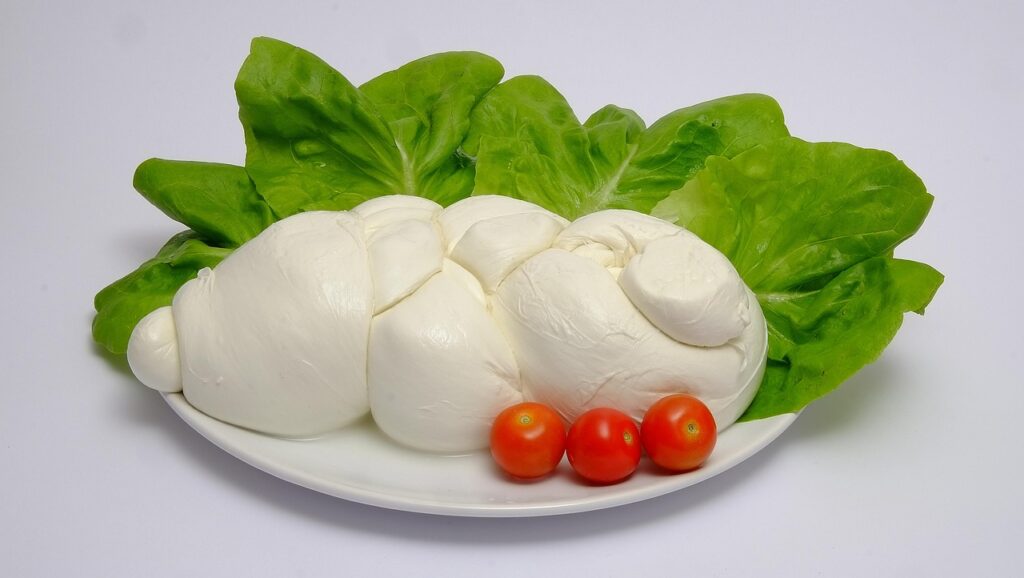
The food of Puglia is renowned for its simplicity and authenticity. Traditional dishes are characterized by the use of fresh, seasonal ingredients, often sourced directly from the sea. Among the most famous dishes are orecchiette with turnip tops, broad beans and chicory, tiella barese, broad bean puree and focaccia barese.

Calabrian cuisine is also rich in history and tradition, characterized by authentic flavors and high-quality ingredients. Traditional dishes are the result of recipes handed down over time, and often contain chili peppers or other spicy products. Among the most famous dishes we find ‘nduja, the chili pepper sausage to spread on bread or add to pasta sauces.
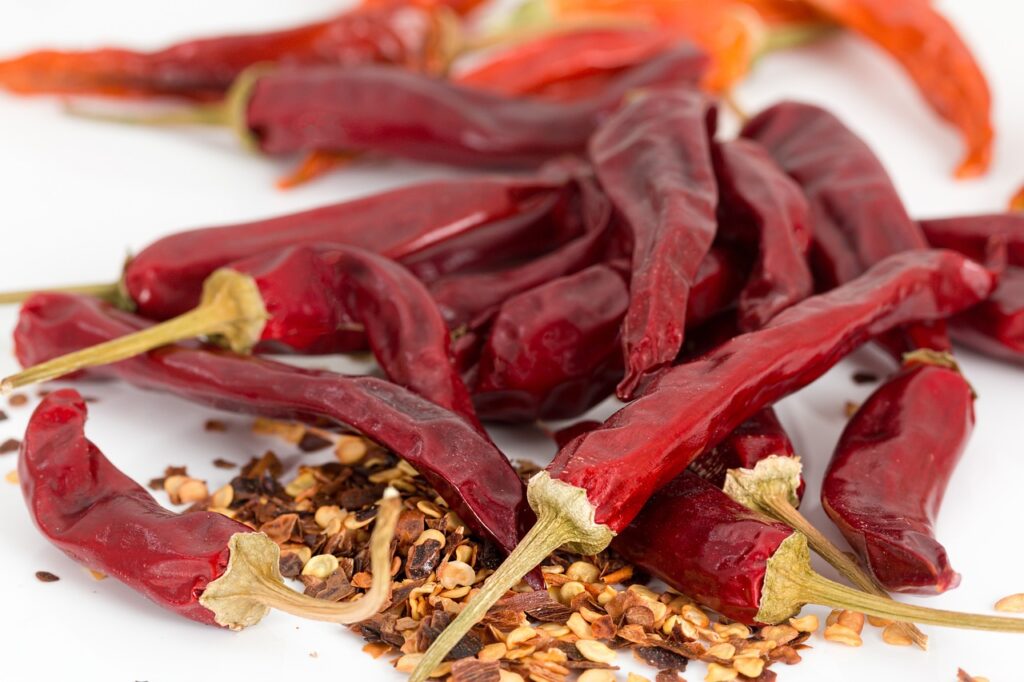
Thanks to its geographical position and history, Sardinia has developed a unique culinary tradition that combines Mediterranean influences with a touch of originality. Traditional dishes are often prepared using local ingredients such as meat, fish and cheeses with an intense flavour. Among these, Pecorino Sardo stands out for its strong and aromatic flavour, which encapsulates all the authenticity of the culture of this island. It is a mature cheese, obtained exclusively from sheep’s milk, and its history is rooted in the ancient pastoral traditions of Sardinia, where sheep farming has been a central activity of the local economy for centuries. Thanks to this tradition, Pecorino Sardo has become one of the most representative symbols of the island. Among the main dishes of Sardinia are also zuppa gallurese, porceddu (roast suckling pig), pane carasau and seadas, one of the most famous Sardinian desserts, which are fried tortelli filled with pecorino and garnished with chestnut honey.

Last but not least, Sicilian food is a true culinary experience that combines tradition, history and unique flavors. The island is famous for its gastronomic richness, which has its roots in a combination of Mediterranean, Arab and Norman influences. From olives to oranges, from pistachios to honey, from ricotta to pecorino cheese, Sicilian products are appreciated for their authenticity and unique taste. Sicilian pastry is also famous throughout the world for its irresistible sweets, such as cassata, cannoli and biscuits made with hazelnuts and almonds.
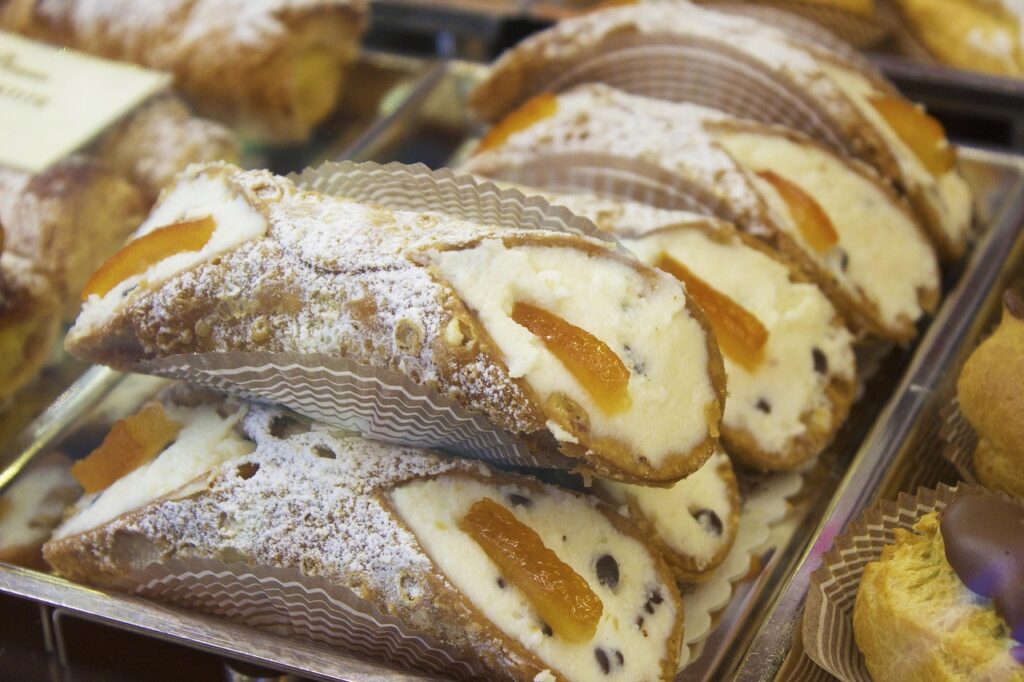
Conclusione
At work, at the bar, among friends, with family, for Italians talking about cooking and exchanging typical recipes is an opportunity for fun and socializing.
If you also love talking about cooking and want to learn more about the typical dishes and products of our territory, we suggest you delve deeper into this topic in our conversation lessons, where you can find a teacher who will guide you on a journey to discover the flavors and traditions of our regions: https://chiaratheitalianteacher.com/cucina-italiana-e-piatti-tipici-regionali/
And don't forget to write in the comments what your favorite Italian food is!



